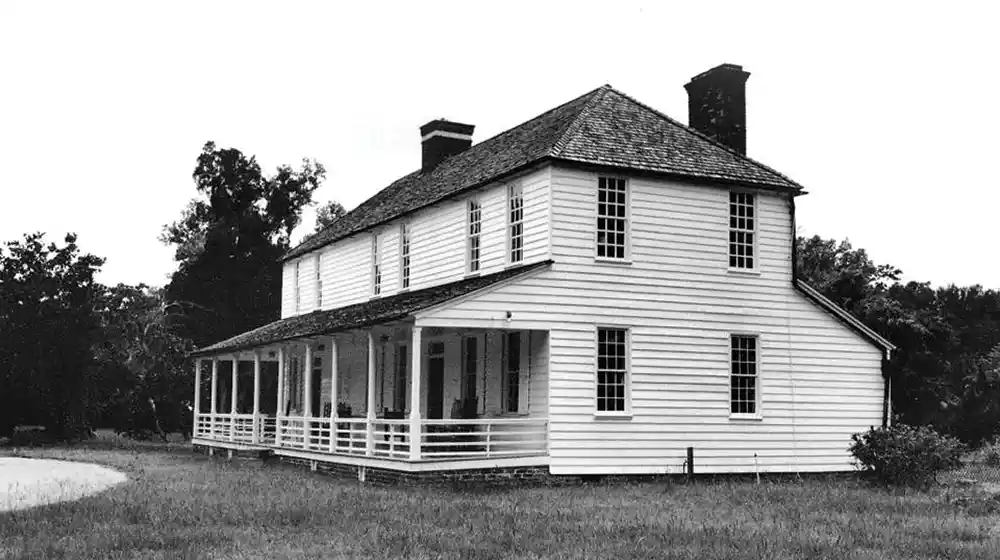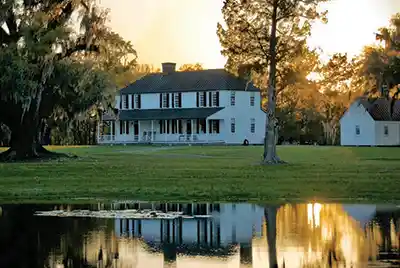
For Charlestonians, it’s always been about rice. Red rice. Rice pilau. Hoppin’ John. Rice pudding. If you’re new to the area, hopefully you’ve had the opportunity to eat – or maybe even cook – one of our signature rice dishes. And if you’re a native, you know that no home cooked dinner is complete without one of them.
The house at Middleburg Plantation in Huger was built in 1697 by Benjamin Simons
These days, the rice served on most Lowcountry tables comes from Texas or Louisiana. But centuries ago, the Lowcountry was the only place in America where rice was grown. It took the country by storm in the 18th century and this lucrative cash crop put Charleston on the map.
 Folks can visit attractions such as Hampton Plantation north of McClellanville and the Charles Pinckney National Historic Site at Snee Farm to learn more about the rice culture – from sweetgrass baskets, to rice trunks, to rice mills, to the enslaved people who made it all happen. Yet, there were once dozens of plantations on both sides of the Cooper and Wando rivers, most of which have now been replaced by modern suburban neighborhoods. But some of the old plantations are in private hands. The oldest wooden plantation house in the state stands at one of them.
Folks can visit attractions such as Hampton Plantation north of McClellanville and the Charles Pinckney National Historic Site at Snee Farm to learn more about the rice culture – from sweetgrass baskets, to rice trunks, to rice mills, to the enslaved people who made it all happen. Yet, there were once dozens of plantations on both sides of the Cooper and Wando rivers, most of which have now been replaced by modern suburban neighborhoods. But some of the old plantations are in private hands. The oldest wooden plantation house in the state stands at one of them.
The house at Middleburg Plantation in Huger was built in 1697 by Benjamin Simons, one of the many Huguenot immigrants who settled the Cainhoy peninsula. A grand oak-lined entrance is the gateway to this 326-acre property overlooking the east branch of the Cooper River. The house is similar in style to the “Charleston single house” – long and narrow – and was likely a precursor to the design of these traditional houses in downtown Charleston. Its simple architectural style is believed to have originated in Barbados, where many of the early Lowcountry settlers migrated from. A hipped roof, two chimneys and clapboard walls are also architectural features of its early years.
The fact that this house is still standing after 327 years is nothing short of a miracle. It’s rumored that during the Revolutionary War, British Lt. Col. Banastre Tarleton had ordered it to be burned. But for some unknown reason, it wasn’t. Evidence that Tarleton was there is a gash, purportedly from his saber, left in the column by the front door. Another officer etched his name in a surviving windowpane.
In the early 19th century, the first public rice mill, thought to also be the first in the country that was steam-driven, was built on the property by Jonathan Lucas, a descendant of the original owners of Middleburg. For more than two centuries, the property was owned by various extended family members, a list comprised of other Who’s Who Lowcountry names – Ball, Dingle, Gibbes – who continued to produce rice there until 1927 when the industry was taking root elsewhere in the South. In 1981, Max and Jane Hill purchased the property and began renovations of the house. Few alterations had been done prior to their ownership and other than the porch and exterior rooms, the house was pretty much the same as it had been since the beginning.
The Hills used the property for weekend getaways for 25 years, but eventually put it up for auction in 2007. After failing to obtain an acceptable offer, it was taken off the market. Eight years later, however, the Hills sold it for $3.5 million to a Charlotte restauranteur, Howard Martin Sprock III, the founder of Moe’s Southwest Grill and the Planet Smoothie franchises. Sprock embarked on a complete restoration of the historic house and two auxiliary buildings; the original kitchen house and a storage building initially used for drying seed rice. In 2021, he sold the property to another Charlotte businessman, Jeffrey T. Wise, owner of the National Whitewater Center, for $4.49 million.
Although the 2,500-square foot 4-bedroom house and surrounding property will probably never be seen by most of the public, it was registered as a National Historic Landmark in 1970. The Hills granted an easement on the property to the Lowcountry Land Trust to further ensure that the future of the house is guaranteed to be protected in perpetuity and its walls will continue to hold the legacy of its indelible mark on Lowcountry history, culture and cuisine.
By Mary Coy

Leave a Reply